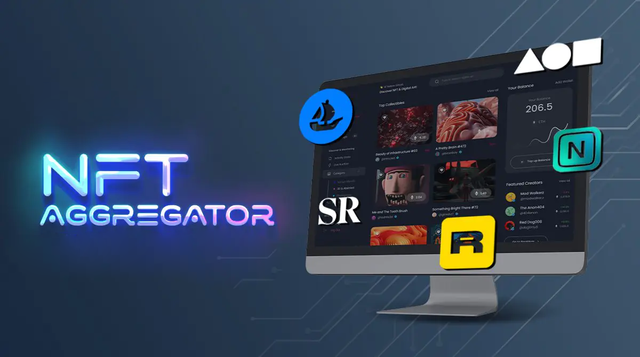Hi everyone,
I'm excited to share with you my experience developing an NFT aggregator platform. For those who don't know, NFTs (non-fungible tokens) are unique digital assets that are stored on a blockchain, making them tamper-proof and verifiable. They have gained a lot of popularity recently, as they allow creators to sell digital art, music, videos, and other content as one-of-a-kind items.

However, the NFT market is highly fragmented, with many marketplaces, platforms, and chains that don't talk to each other. That's where an NFT aggregator platform comes in. Our goal was to create a hub that would allow users to discover, buy, and sell NFTs from multiple sources, using a single interface and wallet.
Here are some of the challenges we faced and the opportunities we seized during the development process:
Integrating with multiple APIs:To fetch data from different NFT platforms, we had to integrate with their APIs, which often had different structures, rate limits, and authentication methods. We had to write custom code to normalize the data and handle errors and timeouts. However, this also allowed us to offer a wider selection of NFTs and compare prices and features.
IHandling different blockchain networks: Each NFT platform may use a different blockchain, such as Ethereum, Binance Smart Chain, or Solana, each with its own gas fees, confirmation times, and network effects. We had to support multiple wallets and networks and make sure that users didn't lose their assets or pay unnecessary fees. However, this also allowed us to tap into the liquidity and innovation of different communities and ecosystems.
IDesigning a user-friendly interface: To attract and retain users, we had to create a simple and intuitive interface that would allow them to browse, filter, sort, and bid on NFTs easily. We had to balance aesthetics, functionality, and responsiveness and test our design with real users. However, this also allowed us to differentiate ourselves from other NFT platforms that may have complex or outdated interfaces.
Ensuring security and privacy: To protect users' funds and data, we had to implement strong security measures, such as HTTPS, 2FA, encryption, and audit trails. We had to comply with relevant regulations, such as KYC/AML, and avoid scams and hacks. However, this also allowed us to build trust and credibility with our users and partners.
Overall, building an NFT aggregator platform was a challenging but rewarding experience. We believe that NFTs have the potential to revolutionize the way we create, share, and value digital content, and that an aggregator platform can make this process more accessible, efficient, and fun.
If you're interested in learning more about our platform or sharing your own experience with NFTs, please feel free to comment below or contact me directly. Thanks for reading!